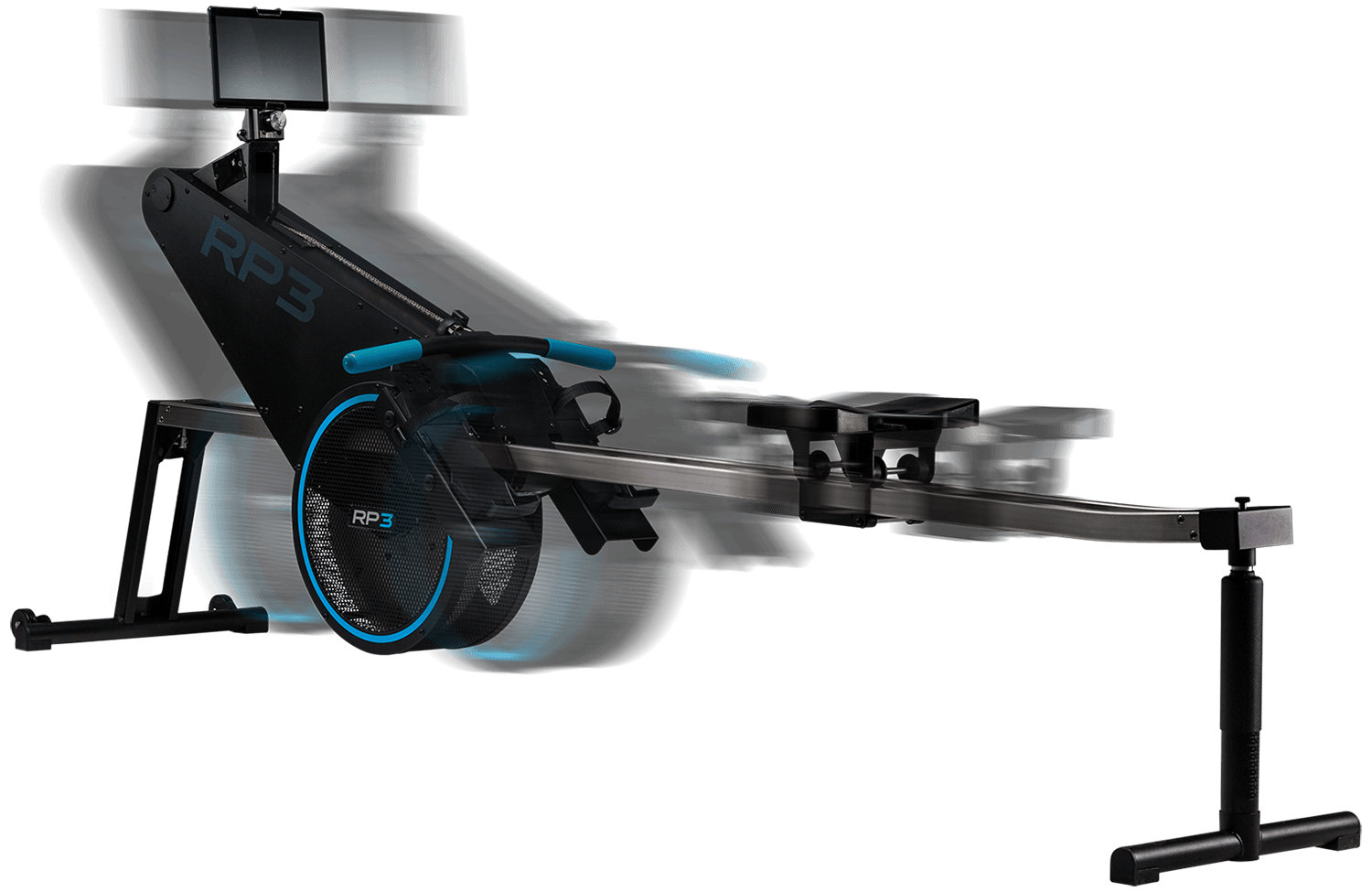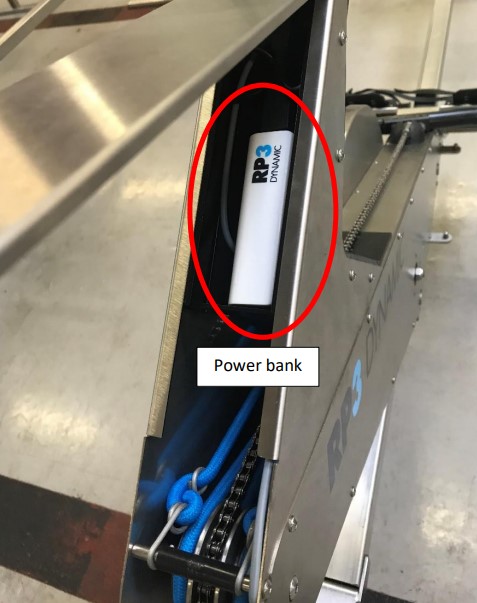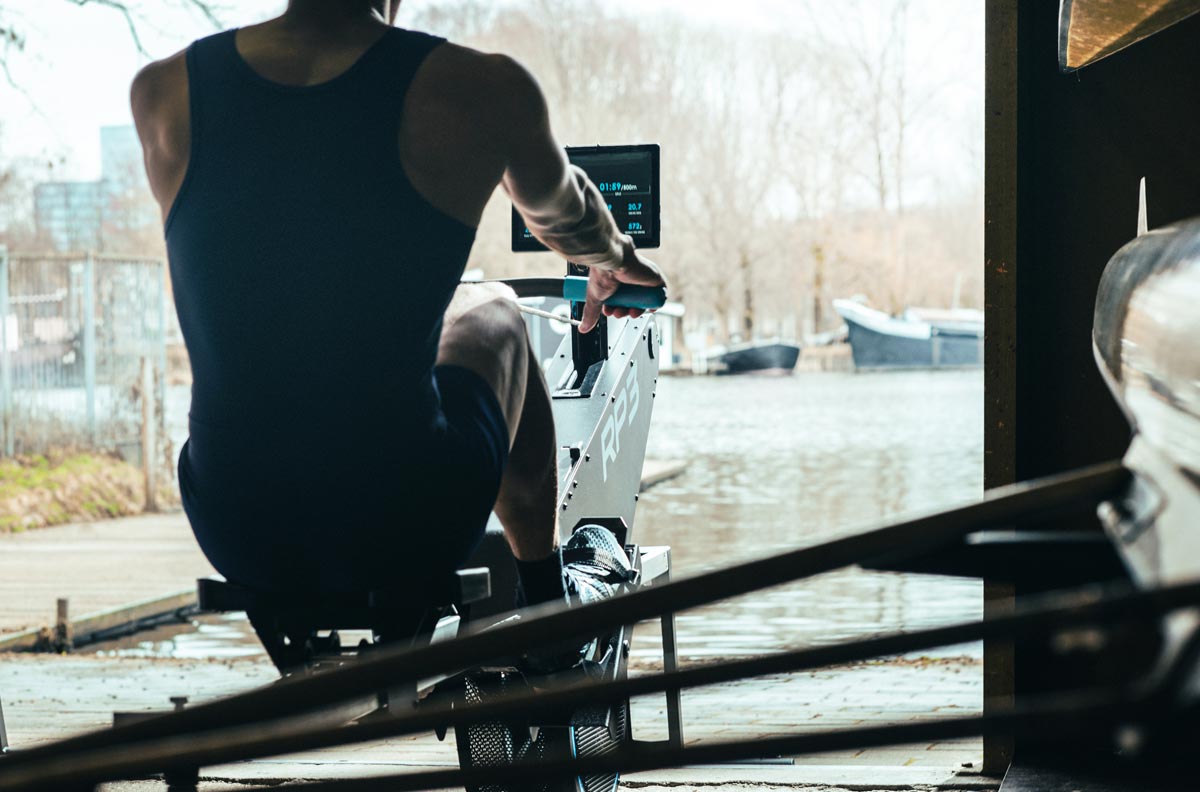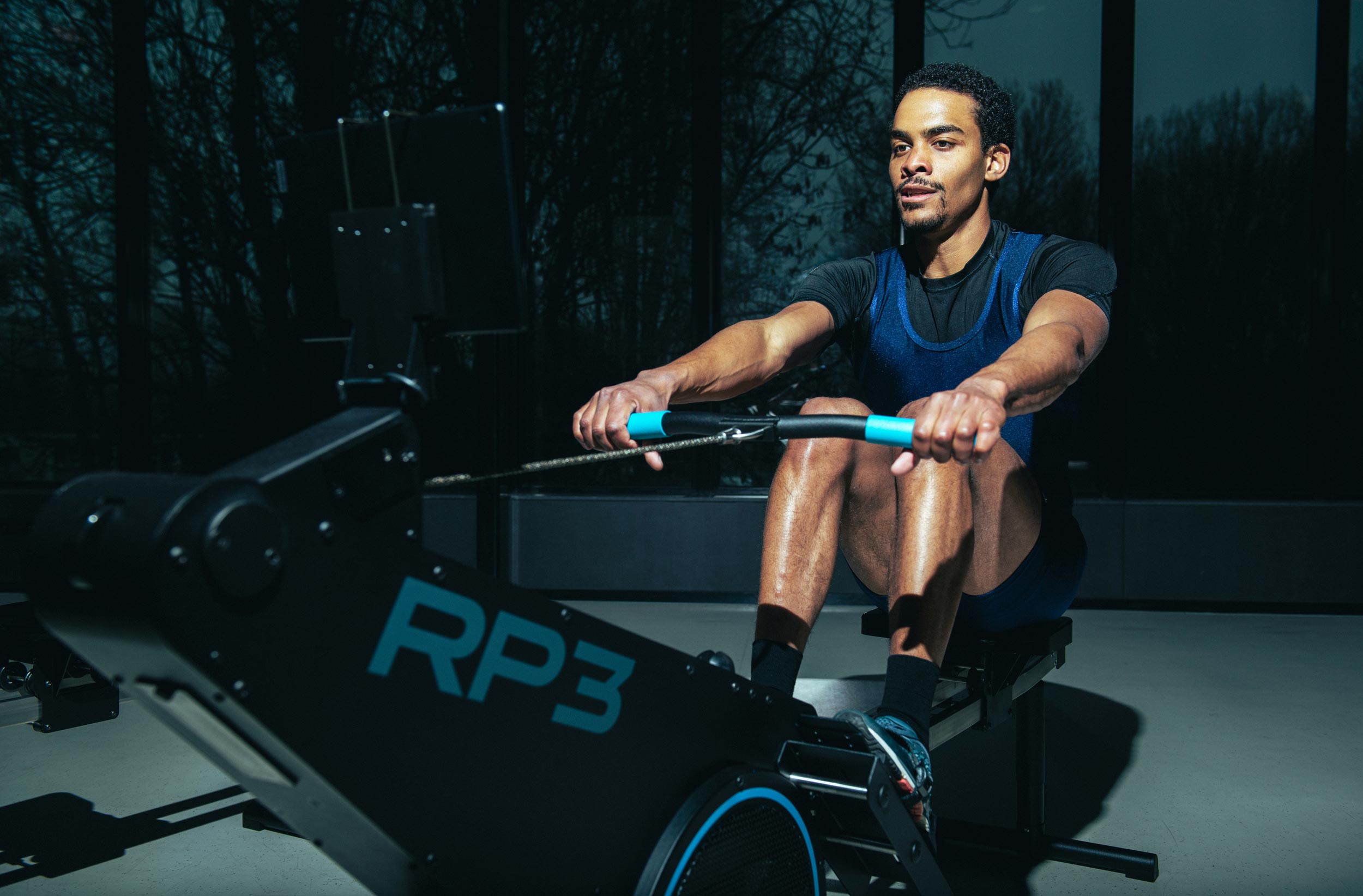First of all, rowing on water is, of course, rowing on water. An RP3 stands on the mainland, on the ground, and that of course gives more stability. It is possible to use a ‘wobble seat’, which also simulates the lateral imbalance of a rowing boat. With a ‘wobble seat’ you can train to sit more upright and prevent imbalance.
In the boat, the catch; where the blades of the oar go into the water, is more difficult than on an ergometer. After the catch, the feeling of rowing is very comparable to the rowing stroke in the boat. Hang, build up pressure, finish with back and arms. The final part of the stroke is good to practise with RP3, where most – even experienced rowers – often lose pressure too quickly. The recovery is also comparable to a recovery in the boot.
Technique is a factor for better scores, whereas on a static ergometer just more force is also an option for better results. On RP3 Dynamic indoor rowing machines you are implicitly ‘forced’ to improve and be as technical as possible.
With RP3 you get direct feedback via the monitor (App on smartphone or tablet) about the shape of the power curve and the figures such as joules, watts and stroke length. There are many other fields (30) to select, besides the standard ‘stroke rate’, ‘split’ (time / 500m) and ‘average split. Rowing on RP3 therefore gives much more real time feedback over the rowing stroke. This makes RP3 a very suitable training machine for better rowing and improving your rowing technique.
With RP3 it is also possible to physically link 2 or more machines. This allows the synchrony of the pressure curve of the team of rowers to be trained. The software offers the possibility to analyse your own curve after the workout, but also the curves of the team (overlay) and expose the differences. This is input for improvement.
RP3 is also busy adding rowing data from boat training sessions to the log, so that this data can also be compared with rowing data from an ergometer training and vice versa.





